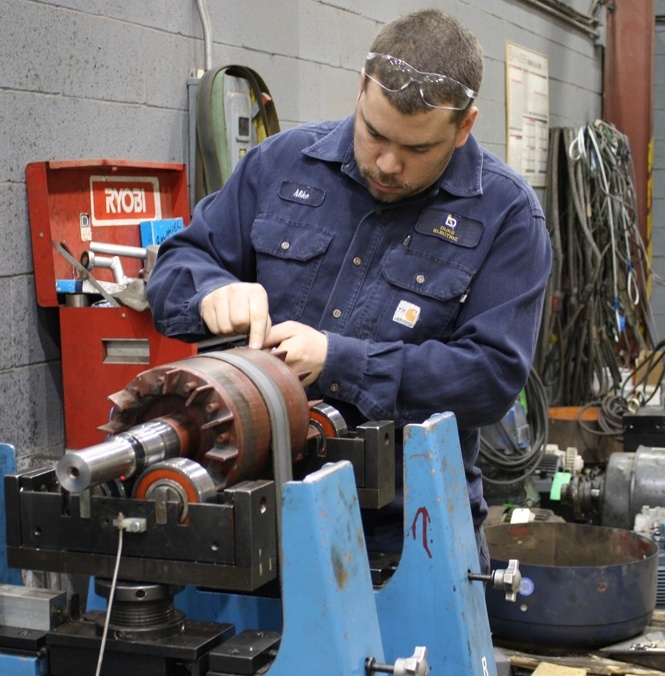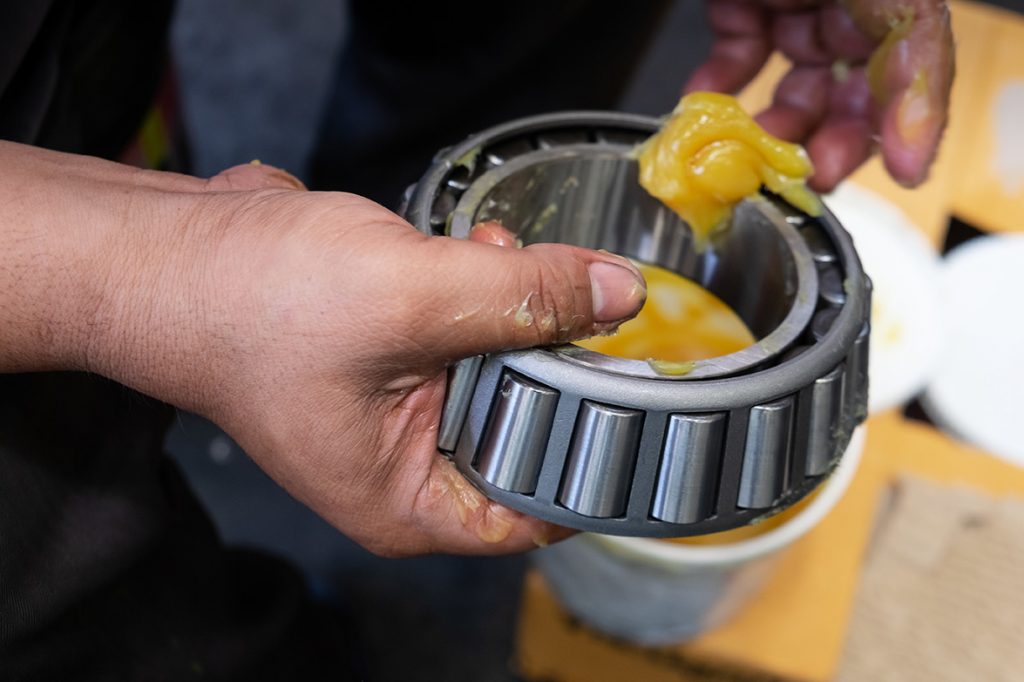Motor failure FAQs November 2, 2020
Fast answers to frequently asked motor failure questions
After we put together our essential guide to motor failure one of our guys shot off a text to the boss saying “TLDR.” He had a point. If you like your articles short and sweet, this one answers some of the most common questions about motor failure in six sentences or less.
Bearings are responsible for 51% of motor failures. Windings are responsible for 16%. External causes such as temperature, contamination and inappropriate mechanical loads are also responsible for 16%. Ten percent of failures result from unknown causes, 5% from the rotor and 2% from the shaft or coupling. But component failure isn’t likely the root cause—check out the essential guide to motor failure for help figuring out what really happened.
The fast answer is according to the manufacturer’s specs—so go get that manual! Here are two additional tips. Calculate the number of pumps it takes to get to the correct amount of grease by weighing the grease (don’t forget to record that information so you only have to pump-and-weigh once). And remember to charge the pump before greasing. We’ve also put together a step-by-step article about motor greasing.
Test for connection issues and open circuits in windings by performing a winding resistance test using a digital multimeter. Test for weaknesses in the motor’s ground wall insulation using a megohmmeter (megger). A surge test will find interwinding faults undetectable by DC tests. A HiPot test looks for leakage current, while a continuity test confirms current is flowing properly.
An electric motor can overheat because of motor overload, improper cooling or ventilation in the plant, failure of motor cooling systems, voltage unbalance, incorrect supply voltage, frequent starts, improper connections, poor power quality, moisture and poor motor-application fit.
Power the motor down using proper lockout/tagout procedures. Perform an inspection: look for discolouration and loose connections at the starter, listen for sounds when you turn the shaft, feel for heat and pay attention to any burning smells. Then conduct initial resistance tests, check fuses, look for voltage unbalance and check connections in the junction box. If initial testing revealed potential problems, test stator winding phase resistance and resistance to ground to determine whether the problem is with the motor or the line circuit. Next, run the motor without the load to test for voltage, current and balance (check the readings are within spec) and perform the sight, sound, touch and smell test again. Finally, re-engage the load and do the four-senses test a last time.
According to the U.S. Department of Energy, electric motors can last anywhere from two years to many decades. Poor maintenance, harsh operating conditions, improper use and a poor motor-application fit will all shorten motor life.
Back in 2013, an article in Plant Engineering stated that a “typical” motor rewind cost $2600 USD. If you factor in inflation, you’re looking at a “typical rewind” in 2020 of close to $3000. Don’t go for the lowest price motor shop, as a poorly rewound motor can easily lose 1% to 5% efficiency, costing you much more in the long run.
If your 3-phase AC electric motor won’t start, first check if the circuit breaker was tripped or a fuse is blown. Then test for any voltage problems, including phase-to-phase and phase-to-ground shorts and phase-to-phase open circuits at the line side, load side, in the motor starter leads and the motor leads. If power circuits seem fine, test the insulation. If voltage isn’t the problem, check the AC drive. If that’s fine, the problem may be mechanical—uncouple the load and run the motor. If it works, the problem is the drive train. If it doesn’t, the problem may be the motor bearings.
First, confirm that the motor failure is due to coil damage. Then rewind your electric motor only when it makes financial sense. If the failed motor is less than 25 HP and is easily and cheaply replaced, don’t rewind it. If the motor is larger, more expensive to replace or a new motor will require a long lead time, get it rewound by a qualified motor shop. You may also wish to purchase a new motor and rewind the old one so you have a spare. Don’t rewind a motor if there is stator damage.
An armature can fail due to overloading, insulation breakdown, stalling, regulator failure, grounding, shorts that cause the winding to burn out, and poor airflow. Another cause of armature failure is a worn commutator, which can be caused by overloading, vibration, contamination, and incorrectly sized brushes and brush assemblies.
Bearing failure is the most common cause of motor failure, followed by winding failure. Bearing failure may be caused by vibration, overheating, overloading, misalignment, moisture or shaft current. Winding insulation failure may be caused by moisture, overload, harmonic distortion, overheating, vibration, voltage unbalance or transient voltage.
Early signs of motor overload include overheating, increased current draw and reduced torque. If the overload isn’t corrected, the bearings and windings can be damaged. Eventually the motor will permanently fail. If your motor is designed with a service factor that allows occasional overloading, don’t regularly run above rated load.







